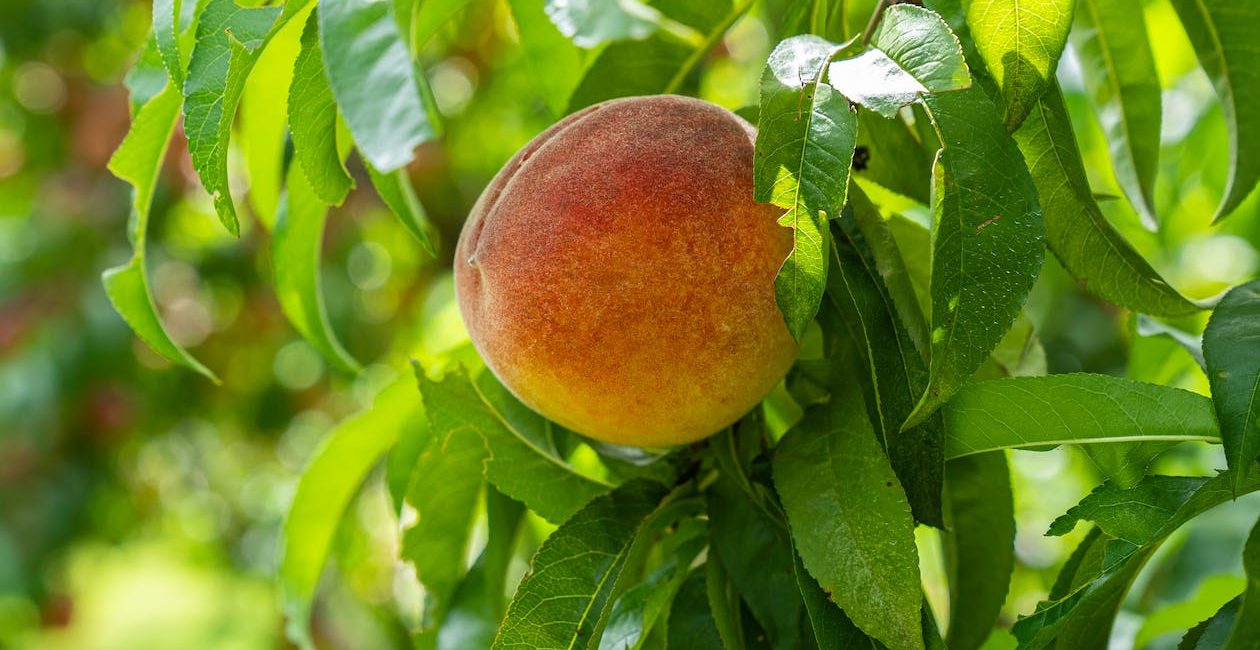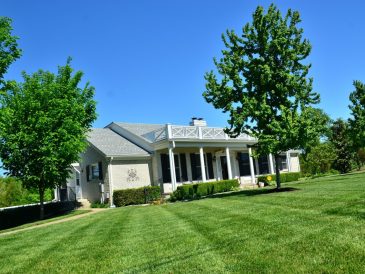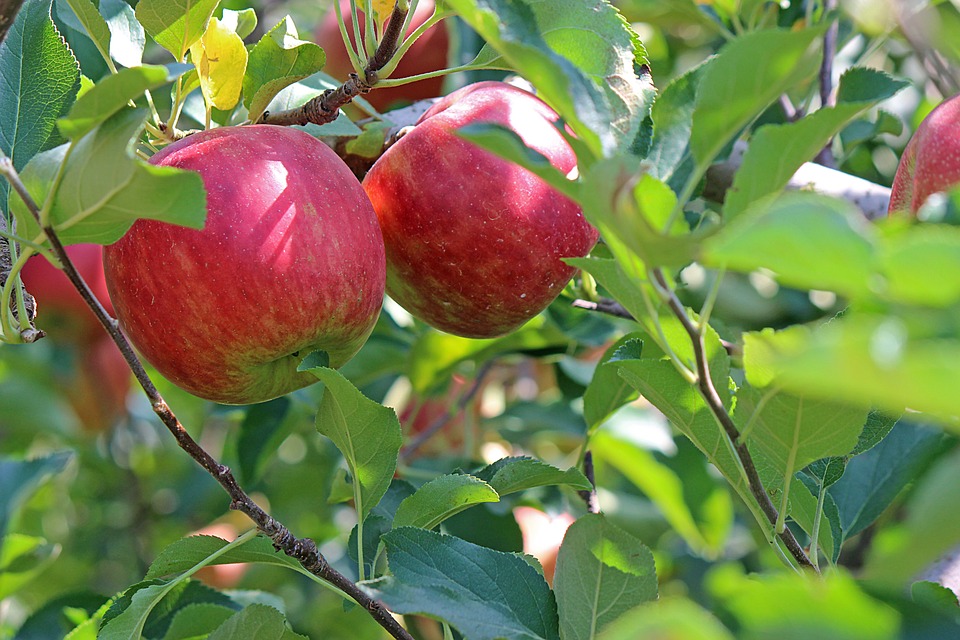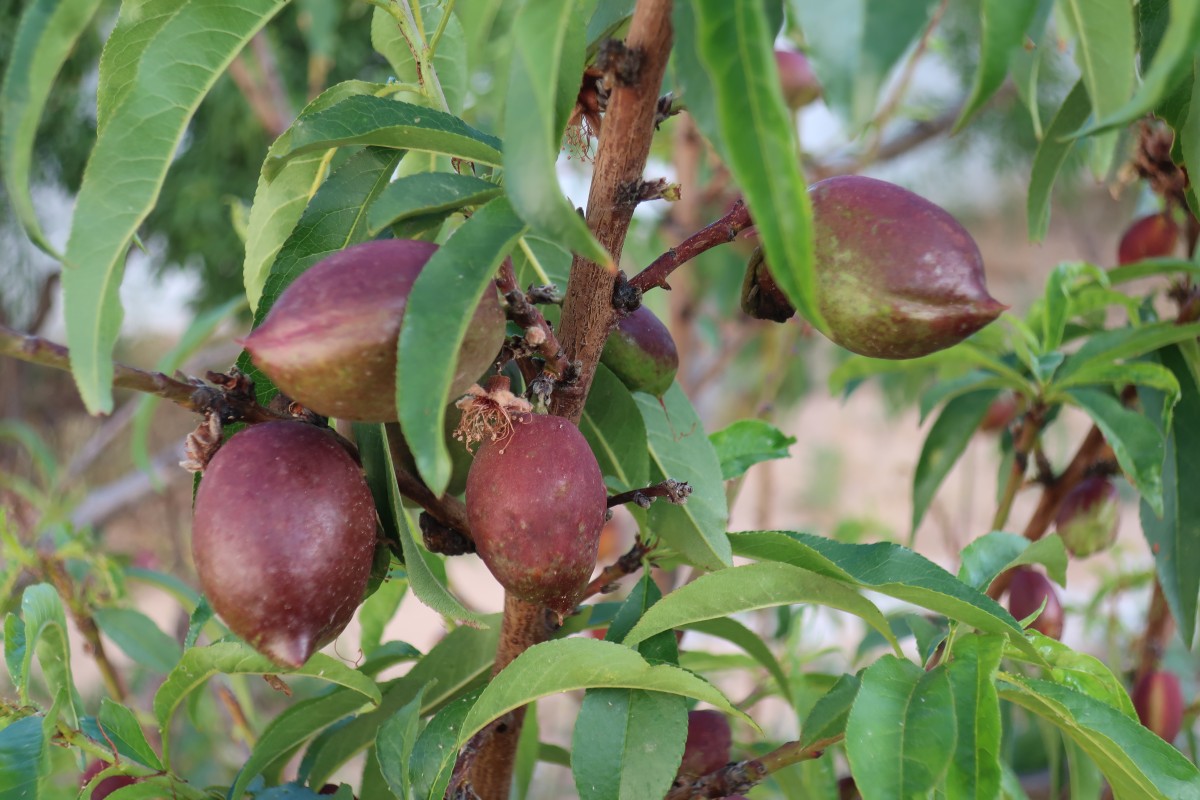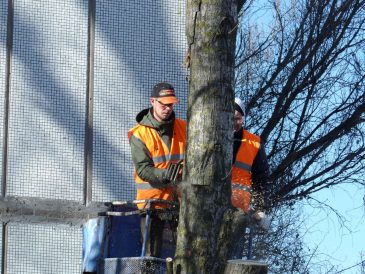3 Types of Pruning for Fruit Production
Pruning cuts accelerate fruiting and improve the yield of fruit trees. It often starts 1 or 2 years before the tree is fully formed if it is a goblet or trellised form. The full-wind forms, stems, or half-stems do not need this pruning, except for peach and apricot trees.
There are three types of fruit tree pruning:
– the trigemme pruning applies to pome fruit trees (apple trees, pear trees…) in winter;
– the hook pruning for stone fruit trees, especially for peach and apricot trees, whatever the shape of the tree, in March;
– the green pruning or “pinching” is carried out especially on apple, pear, and peach trees, in addition to the previous pruning during the summer.
Pruning cuts can be replaced by gimmicks such as arching, inclination or straightening of branches, notching (incisions on or under a bud), and loops… These “non-pruning” practices are:
– exclusively applied on trellised fruit hedges;
– combined with trigemme or hook pruning on spindles, cattails and goblets (small and medium-sized full-wind forms) of pome or stone fruit trees;
– unnecessary on full-wind forms.
Here are the different ways to prune for fruiting.
Method 1: do a trigeminal pruning
Locate the buds
In early March, when the buds are well differentiated, the branches of pome fruit trees show 3 kinds of buds:
– Small and pointed against the stem, the woody eye will give only foliage during that year.
– The sting is a triangular, sharp, prickly bud that can turn into a flowering bud the following year if it is not supplied with enough sap. If this happens, it starts again with wood and does not give flowers.
– The flowering bud (buds) can be distinguished from the others in March-April when it becomes globular. The white of the flower petals can then be seen between its scales. It can be located at the end of short branches or a 5 to 20-cm branch (crowned twig).
Principles of trigemme pruning of pome fruit trees
– When carried by a small wrinkled stem, the flowering buds will produce fruit if pollination occurs under good conditions. Each bud contains several flowers. These buds are, of course, to be kept unless their number is excessive. To avoid exhausting the tree, space the flowering buds along the trunk.
– The small swollen twigs having fruit in the previous year(s) have one or more round scars where the fruit was attached. Most often, they are brought to fruit again. Limit the number of flowering buds if these small branches are too full.
– Woody shoots are 1-year-old shoots (developed last spring) forming straight stems that usually bear only small buds, the woody eyes. They start at the level of scars left by the scales of the bud that gave them birth. The light colour of the bark differentiates them. These twigs provide only leafy shoots the following season unless some of their buds, less supplied with sap, are transformed into stings.
– Simple twigs are spindly twigs of 15-20 cm bearing only woody buds for several years. The single twig is likely to develop into a crowned twig with a tip bud and then form more buds due to the arching generated by the tip fruit.
Keep 3 buds in winter
The trigemme pruning is applied every year and consists of leaving only the first 3 buds of each woody branch to transform them into spurs.
Different cases can occur in the following years.
Let’s take the following example to understand the mechanism of trigemme pruning:
– In the spring following this pruning, the bud just under the cut produces a new woody branch while the 2 others (sometimes only 1) form a rosette of leaves and grow.
– The following winter, you will observe in their place 2 triangular buds with wrinkles at the base, the stings. They start at the level of scars left by the scales of the bud that gave them birth. The light colour of the bark differentiates them. These twigs provide only leafy shoots the following season unless some of their buds, less supplied with sap, are transformed into stings.
– Simple twigs are spindly twigs of 15-20 cm bearing only woody buds for several years. The single twig is likely to develop into a crowned twig, with a tip bud and then form more buds due to the arching generated by the tip fruit.
Keep 3 buds in winter
The trigemme pruning is applied every year and consists of leaving only the first 3 buds of each woody branch to transform them into spurs.
Different cases can occur in the following years.
Let’s take the following example to understand the mechanism of trigemme pruning:
– In the spring following this pruning, the bud under the cut produces a new woody branch while the 2 others (sometimes only 1) form a rosette of leaves and grow.
– The following winter, you will observe in their place 2 triangular buds with wrinkles at the base, the stings. You will prune above the first bud of the woody branch, leaving 3 buds. If only one stinger has formed and is in the terminal position, prune the woody branch longer to reduce its sap supply. The stinger would evolve into a woody shoot instead of becoming a flower bud the following year.
– On the 3rd winter, cut just above the 1st flowering bud that will produce fruit this year and the next.
The idea, then, is to leave only 3 of the following on a twig or sprig (a branching offshoot of a branch bearing fruit and vegetative organs and producing for several years) and as close to the trunk as possible:
– a wood eye;
– a latent (dormant) eye;
– a stinger (likely to turn into a bud or a wood eye the following year);
– a flower bud;
– a crowned twig;
– or a simple twig.
For the rest, the extensions of the carpenters are to be shortened to leave only 20-25 cm of growth. Remember to cut above a bud facing the opposite direction of the shoot (if the shoot is going to the right, cut above an eye to the left, etc.). Use sharp, disinfected pruning shears and make an angled cut.
Method 2: Carry out a hook pruning
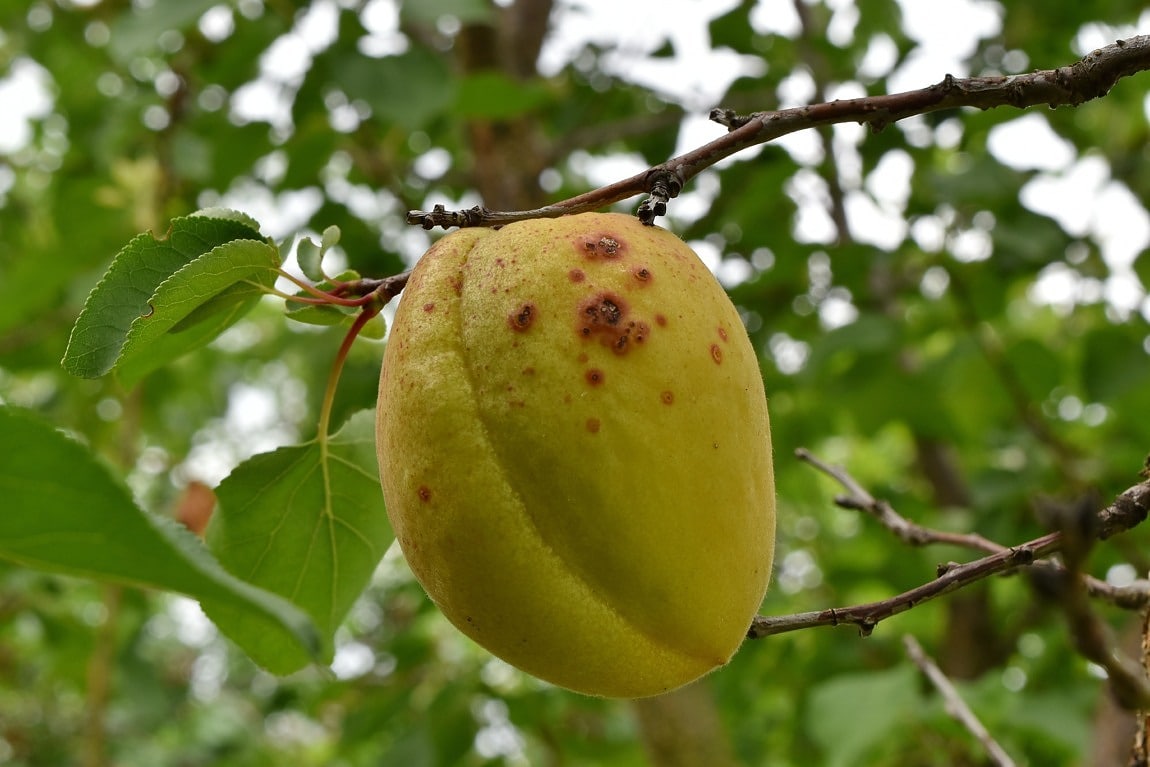
Hook pruning is applied yearly on peach and nectarine trees that wear out quickly, lengthen their branches, and no longer produce fruit.
– Unlike pome fruit trees or other stone fruit trees, a peach or nectarine tree no longer bears buds on a branch that has already borne fruit. This one usually dies or elongates into a woody branch.
– The buds hatch on the previous year’s shoots that are kept in part (called mixed twigs), chiffoniers and May clusters – closest to the trunk:
◦ Mixed shoot: 30-50 cm long shoot providing the main production in peach tree with 2 woody buds at its base, 3-4 buds, then woody buds. It can ensure the production of fruit and the renewal of shoots.
◦ Chiffon: a 6-15 cm branch bearing buds and a woody eye at its tip and sometimes at its base. It produces 1 to 2 fruits and then cancels (dies) most of the time.
◦ May bunch: a short shoot of 1 to 5 cm bearing buds and a wood eye at its tip. In peach, this shoot dies after producing fruit or not, unlike the case of other stone fruit trees, such as cherry trees, that produce for a long time on the many buds.
Pruning allows the renewal of these fruiting branches.
Severe and simplified pruning is enough to rebalance the tree, which always tends to bear too much fruit. It consists of pruning the branches 1 to 2 cm in diameter to simplify the branching.
Keep 2 woody buds and one fruit-bearing branch per spur
The peach trees are about to bloom (petals are visible between the bud scales), and it is now easy to distinguish the large, round flower buds from the pointed wood buds. Note that, unlike seeded fruit trees, a bud contains only one flower.
Keep 50% flowering branches (rags or mixed branches) and 50% woody branches:
– Cut back the 2-eyed woody twigs that will produce replacement twigs in the spring, likely to flower the following year.
– The mixed twig is shortened above the woody eye following 3-4 buds to retain a sap pull).
– The rag is left intact. After it has produced fruits, it will be completely cut back on the rootstock or just above the wood eye at its base, if any).
– The May florets will remove themselves after they have produced or not.
– The gourmand is shortened to 2 eyes, if not too long. If not, keep the first 3-4 anticipated ones and cut them back to 2 eyes.
To summarize, on the 2 shoots generated by your previous year’s pruning, make sure you always keep a part of flowers (a rag, a mixed shoot or a bunch of May) and two wood buds present at the base of a wood shoot or a mixed shoot.
For the rest:
– Clear the center of the tree, the intersecting twigs.
– Shorten the frames by 20 to 50 cm by pruning just above a well-oriented wood bud according to the desired shape.
– Don’t forget to treat with a Bordeaux mixture or other fungicides right after pruning to avoid blistering.
If you are at a loss for how to prune your peach tree, apply green pruning during the peach harvest that will dispense with everything else!
Correcting the pruning with a green pruning
Since pruning is not an exact science, rectifying the situation during the season through simple operations such as thinning the fruit and green pruning is advisable.
Green pruning should be preceded by thinning the fruit after the natural fall in June. Using fine scissors, leaving only 10-15 fruits per meter of canopy with 1 or 2 fruits per cluster.
On peach trees
To complete or replace the winter pruning done just before flowering, perform green pruning on mixed branches following these guidelines:
1. The branch bearing the fruit should keep 2 young shoots at the base for future fruiting as replacement branches.
2. Remove cherry-sized fruits, leaving only 2-3 fruits per branch, spaced 10 cm apart, or 20 to 30 fruits per linear meter of the trunk. Use sharp scissors or cut the fruit in half with secateurs so as not to damage the stem. The stalk will fall off by itself. Then keep one young shoot per fruit to provide food.
3. Keep the terminal shoot of the fruiting branch that serves as a sap puller.
4. Remove all other excess shoots at the base.
Prune all non-fruit-bearing twigs to 2 leaves during July.
After that:
– As soon as the shoots accompanying the fruit have 7 or 8 leaves, pinch them off above the 5th leaf. If the two replacement shoots lack vigour, pinch off the terminal shoot as well.
– After harvesting, remove the portion of the spur that bore the fruit to concentrate the sap on 2 branches at its base, or more simply, harvest your peaches by cutting the branches that bear them above the first 2 leafy shoots.
On apple and pear trees
– On trellised forms, in July in pear trees, in August in apple trees:
◦ Complete trigemma pruning with pinching:
▪ of the year’s shoots without fruit after 5 to 7 leaves from the trunk;
▪ of shoots with fruit after 5 to 7 leaves starting from the fruit;
◦ Remove unnecessary twigs that shade the growing fruit.
Note: Pinching is usually done with pruning shears a few millimetres above a leaf.
– On goblet or full-wind forms, act mainly on the gourmands badly cut back during winter pruning. A poorly bent gourmand may have given 2 vigorous shoots, one vertical and one oblique:
◦ With power pruners, cut flush the vigorous vertical shoots (gourmands) that develop at the start of the frames.
◦ Those inclined can be kept but shortened to 8 eyes so as not to give them too much vigour (the last eye hidden in the axil of a leaf, facing outward). If you prune shorter, the buds at the base will regrow wood.
◦ All in all, prune vigorous shoots long or remove them all!

